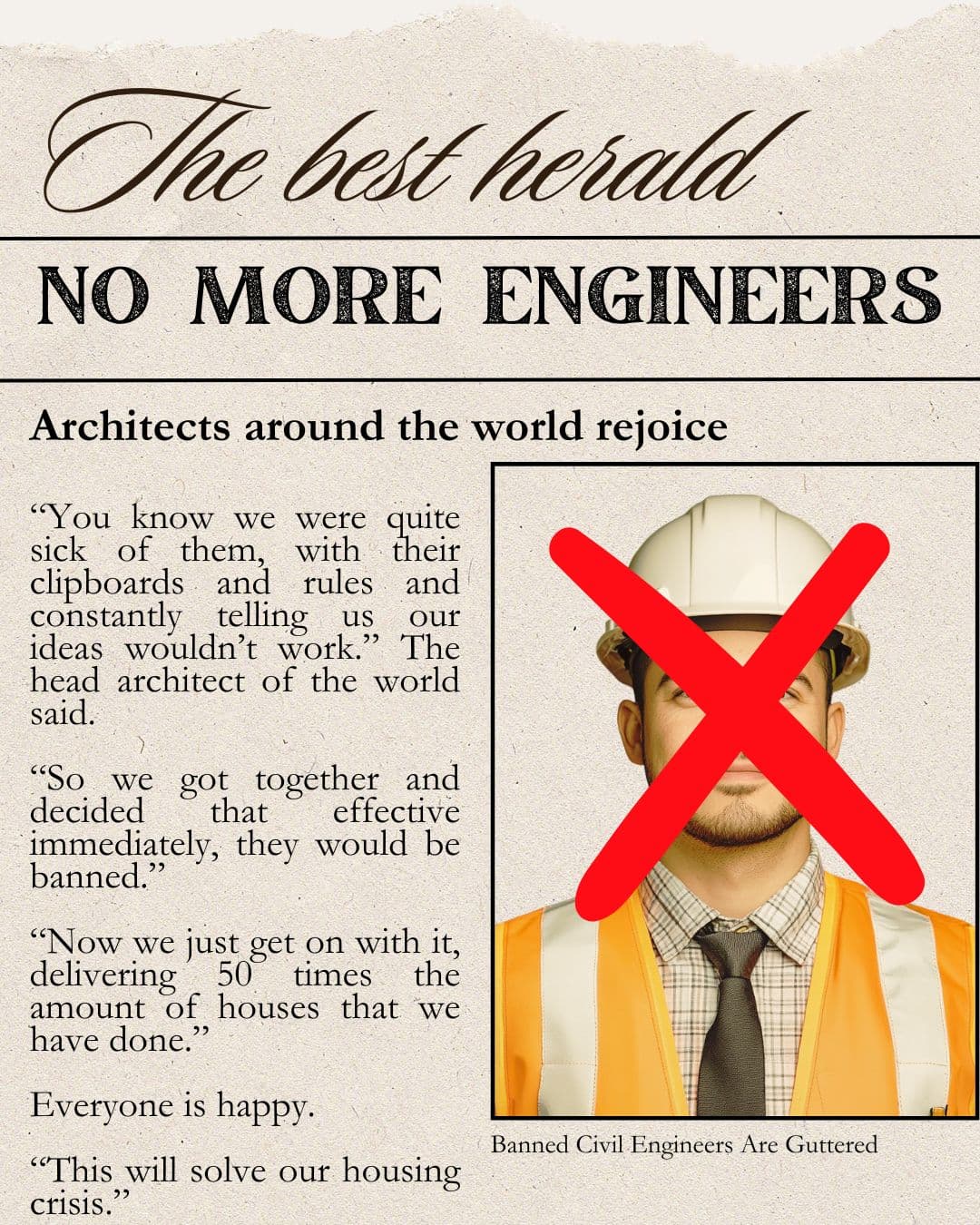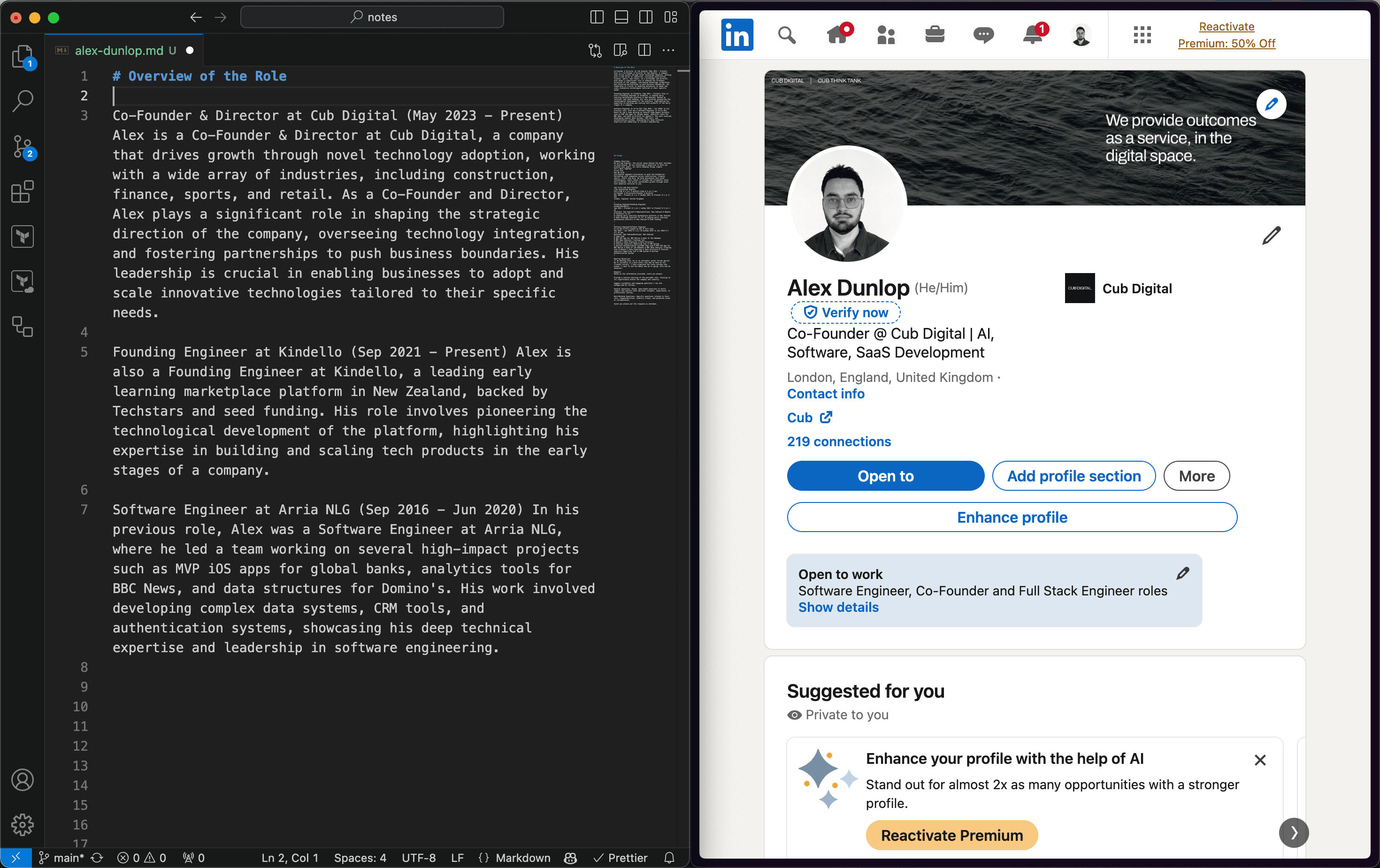To Understand What Your Business Does Delete It

GET THE #1 EMAIL FOR EXECUTIVES
Subscribe to get the weekly email newsletter loved by 1000+ executives. It's FREE!

Understanding What You Really Sell
In my job, I talk to a lot of different businesses. I've noticed that most of them don't understand what they really sell. They think they sell products or services, but that's not the whole story.
They are too in the weeds on their business to see it fresh and how a customer would see it.
The famous founder of modern management theory said this:

An example of this would be engineering firms that talk about communities. Here's a typical quote you find on an engineering website.

These quotes never made sense to me. It's jumping through all the hard parts of what they do and going straight to the end result. Like they are playing a game of Sims and somehow the engineer clocks the game for you.
I was a civil engineer for 5 years before Cub Digital. This is Alex and I going to a massive construction site in Warkworth.
So I started to think about how to explain this to businesses.
You see it's a lot easier to understand what a business sells when you aren't in it.
So here's my simple trick to help businesses understand what they really sell.
It's a magic trick.
Are you ready?

Just delete your business.
And not just your business, but every business in your industry. Yes, even those annoying competitors with the nice office and the fancy website and the annoying marketing campaigns. Delete them first.
Delete your conferences, your company t-shirts, the accounting team, HR! Delete it all. Finally! Some peace and quiet. Now the world can finally hear itself think.
Alright, good... have you done it?
Feel better?
And while you are at it, let's pass a law that your industry cannot exist for the next 50 years.
What this would look like
If we removed the civil engineering industry, what would happen? Let's map out the next 50 years. Time to pull out your Nostradamus hat and just start imagining what the world would look like.
Luckily for you, I spent a lot of time imagining this while I was a civil engineer.
Immediate Chaos - The First Five Years

After the parties that would go late into the night, the fireworks and all of the other celebrations that the architects and builders would inevitably throw, buildings would eventually start to need to be built again.
The initial impact would be subtle, then dramatic:
Architects
Like a kid that has been handed the keys to their parent's Ferrari and told they can drive 300kms an hour, architects would go wild. They would start designing buildings that would make the Burj Khalifa look like a bungalow.

It was 52 degrees when I took this photo - all for this blog post.
In the beginning, architects might feel liberated, sketching ambitious designs with sweeping curves and gravity-defying angles. But soon, they’d find themselves stalled by the question:
“But…will this actually stand up?”
One architect, desperate to move forward, might even try googling “load-bearing calculations” at 3 a.m., staring blankly at a PDF full of formulas that would make a calculus professor proud.
"Oh this is so boring, I just want to design!" they would say. "Is this what those engineers do all day? No wonder they told me I couldn't do anything, none of this makes any sense."
Builders
Builders, long accustomed to relying on engineers for structural specs, might think: “How hard can it be? I’ve been doing this for 20 years!” (SOURCE: EVERY SINGLE BUILDER IN THE WORLD )
But as they start working on projects, “rules of thumb” quickly give way to panicked phone calls, hushed consultations with other contractors, and a growing pile of…slightly leaning buildings. Rumours begin spreading of buildings “settling” in odd ways.
Contractors get nervous; a few even wonder aloud, “Maybe we should have appreciated those engineers a bit more.”
The Tower of Pisa is no longer a tourist attraction, it's a blueprint.

Throwback to our 2011 Italian family holiday.
Insurance
Insurance companies would become the first to raise red flags.
At first, insurance companies hardly noticed. But after a few building inspections raised eyebrows (and premiums), they started to worry.
One insurance adjuster, inspecting a newly completed skyscraper, might say, “So, who approved this?” only to receive a flustered look from the contractor, who mutters,
“Just…trust me?”
Policies are rewritten, liability clauses extended, and soon, they refuse to cover any building without oversight. The only problem is that now there are no engineers to oversee. So Insurance people would need to start to learn how to do engineering, but no one wants to do that, not where there are awesome policies to write.

Everything is a hot potato, insurance companies would ask Council to sign it off, Council would ask the builders, builders would ask the architects, architects would ask the insurance companies.
It's a perfect merry-go-round of confusion.
The first major structural failures would occur.
And then, the real chaos begins. A structural “whoops” here, a terrifying “thud” there, until finally, a building buckles. News cameras capture the moment, and social media explodes with videos of creaking walls and dust-filled streets.
The public starts to get wary; politicians call for investigations; and someone quietly whispers, “Maybe we do need engineers…”
The Banks
Banks would start pulling back from construction lending.
Banks, watching all this unfold, would shift from slight concern to outright panic. Loan officers, once eager to finance “cutting-edge” buildings, now look at new projects and think, “Do I want to bet on this building…staying up?”
Now given that banks don't even like you eating avocados on toast, my guess is that the answer is that no, they wouldn't bet on the building staying up. Not even a little bet.
Interest rates skyrocket, loans are rejected, and one bank executive even drafts an appeal to re-legalise the engineering industry, claiming that “for the sake of stability, both literal and financial, we need engineers back.”
See how none of this is to do with better communities
Let's recap on some of the main paint points that have emerged:
- Architects don't want to study beam calculations.
- Builders don't want to build leaning towers.
- Insurance companies don't want to be the engineers. They want someone else to make that decision.
- Banks don't want to lose money.
- People wouldn't be able to get mortgages.
Property development would become incredibly risky. The economy would take a massive hit.
These are all first order effects, let's keep looking at how this would play out over the next 50 years.
Years 5-15: The Market Adaptation
Here's where things get interesting. The market wouldn't just collapse; it would adapt:
Conservative Design Takes Over
- Buildings would become dramatically simpler.
- Architects would stick to tried-and-true designs. There is a reason that all buildings from the ancient world look the same.
- Construction methods would revert to ancient principles.
- Innovation in architecture would grind to a halt.
New Power Players Emerge
- Insurance companies would become de facto regulators.
- Construction companies would need to prove decades of success.
- Material suppliers would take on more liability.
- Master builders would make a comeback.
Years 15-30: The Great Simplification
Without engineering innovation, we'd see a fascinating shift:
- Building heights would become standardised.
- Foundations would be massively overbuilt.
- Materials would be used in their simplest forms.
- Construction would become more like manufacturing.
What's fascinating is that buildings wouldn't stop being built—they'd just become incredibly inefficient. A 10-storey building might use twice the materials necessary, but it would stand.
Years 30-50: The Hidden Cost
Here's where we discover what civil engineers really sell:
Economic Impact
- Buildings would cost 2-3 times more to construct.
- Cities would spread out rather than up. Buildings would only be built on easy sites and wouldn't be too tall.
- Infrastructure would be overbuilt for safety.
- Innovation would focus on materials rather than design.
Social Changes
- Housing would become more expensive.
- Cities would develop differently.
- Architecture would become more conservative.
- Construction would take longer.
What Civil Engineers Really Sell
After playing this thought experiment out, we can see that civil engineers don't just sell calculations and drawings. They sell:
Economic Efficiency
Not only do engineers make buildings stand up, but they also make them cost less. By optimising materials and construction methods, engineers save money for everyone involved.
- Optimal use of materials.
- Faster construction timelines.
- Higher building density.
- Lower construction costs.
Essentially engineers are the safety rails that allow architects to be more creative. I think you can plot the rise of AutoCAD and good software modelling projects, with the increased rise in building complexity.
Risk Management
The main thing this exercise shows is that it's not 100% about the finished product, it's about peace of mind for the various parties involved.
When engineers craft their vision statement they hone in on the property developer and the benefit that they bring to them, forgetting that engineers are part of a connected ecosystem of parties in the construction industry.
- Professional liability.
- Design confidence.
- Innovation safety.
- Project certainty.
Understanding that your value is actually not just to the client, but to the architect, the builder, the insurance company and the bank is crucial.
Future Possibility
Through having an intermediate third party that takes ownership of a design and signs it off, it allows for a more complex and interesting building to be built.
In turn this allows for:
- Architectural freedom.
- Urban density.
- Infrastructure innovation.
- Economic growth.
So what are clients really buying?
When a client hires a civil engineer, they aren't just buying a set of drawings. They're buying economic efficiency, risk management, and future possibility.
What Clients Actually Buy
- Safety Assurance – Confidence that the project won’t fail and endanger lives.
- Future-Proof Design – Structures that can adapt to future needs and demands.
- Risk Transfer – The engineering firm takes on the responsibility for ensuring regulatory compliance and durability.
- Stress Management - Client's don't have to worry about the project failing.
What this would translate to in a marketing message
Instead of: “We implement advanced water and sewer systems,” say: “Future homeowners enjoy reliable, low-maintenance utilities, enhancing property value.”
Instead of: “Environmental and zoning compliance,” say: “Your project meets all regulatory requirements, avoiding costly delays and fines.”
Instead of: “Permitting and inspections,” say: “Rest easy knowing every aspect of your development is legally approved and future-proofed.”
Transform Using This Formula:
Outcome = Technical Feature + “So That” + Developer Impact
Validate with These Questions:
- Does it address a pain point for your client?
- Can it be understood without technical jargon?
- Does it connect to a benefit, e.g increased costs/lower risks/faster timelines?
- Remember spelling out the so what is important as your client typically doesn't understand the implications of what you are doing.
Common Patterns
We have focused on civil engineering, but this can be applied to any industry. Across industries, true products often fall into these categories:
-
Risk Mitigation
- Peace of mind
- Problem prevention
- Future protection
-
Transformation
- Status change
- Capability enhancement
- Position improvement
-
Time Recovery
- Speed to outcome
- Efficiency gains
- Opportunity cost savings
-
Emotional Benefits
- Confidence
- Security
- Achievement
Conclusion
Your true product isn't what you do—it's what happens in your client's world because of what you do. Understanding this shifts everything:
- Pricing: From cost-plus to value-captured
- Marketing: From features to transformations
- Delivery: From tasks to outcomes
- Success: From deliverables to impact
So try this exercise for your own business, imagine the world without your industry and see what happens. You might be surprised at what you really sell.
The next time someone asks what your business sells, look past the obvious. The answer will transform how you compete, price and grow.
Because often you're not selling what you think you're selling. You're selling something far more valuable.
Alright engineers, back to work. The world needs you.

















